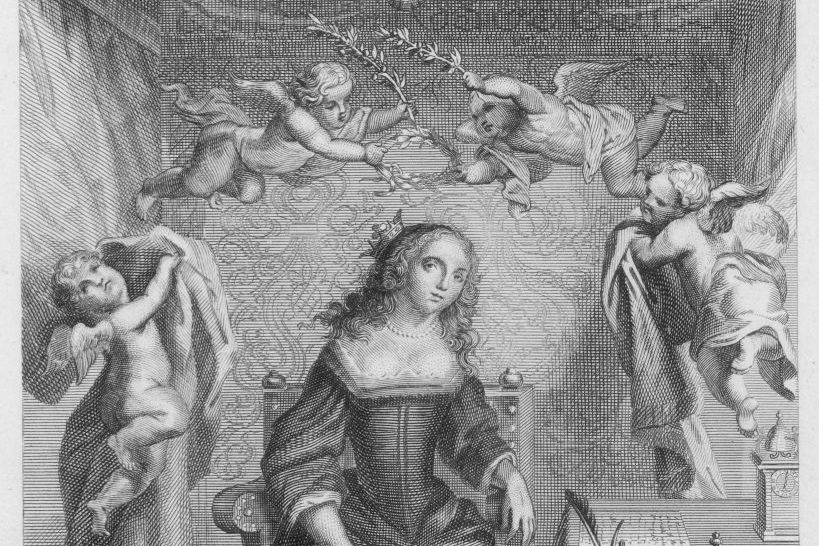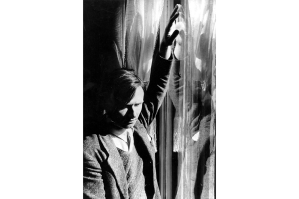Margaret Cavendish, Duchess of Newcastle, who died aged fifty in 1673, was a divisive character whose life spanned one of the most fraught periods of English history. To some contemporaries, she was one of the wonders of the age, while others considered her one of the silliest writers ever to have taken up a pen. In her last two decades, Cavendish published over a dozen works of drama, philosophy and poetry, including what some consider her masterpiece, The Blazing World.
Posterity has seen her obscured and dismissed, the fame she admitted craving granted only in 1929, when Virginia Woolf described Cavendish in A Room of One’s Own as “a giant cucumber” who “frittered her time away, scribbling nonsense and plunging ever deeper into obscurity.” Yet as Francesca Peacock observes in this exhaustively researched and beautifully written new biography, when Woolf concluded her encomium on the forgotten and frustrated women writers of the past with “she lives in you and me… for great poets do not die,” she was quoting none other than Cavendish.
Born to a landed gentry family, Margaret Lucas grew up in Essex, coming of age in the 1640s as the English Civil War was rupturing political and familial loyalties. The staunch Royalism Cavendish displayed throughout her life may have been rooted not only in the conventional loyalties of her class, but in her first-hand experience of the devastation wrought by the conflict. Her family home, St. John’s Abbey, was sacked twice by Parliamentarian troops, and Cavendish was obliged to flee first to the Royalist court at Oxford and then to France with Charles I’s exiled Queen Henrietta Maria.
Peacock writes incisively on the pompous insipidity of court life and the tedious restrictions it imposed on women, yet it was as one of the queen’s ladies that Cavendish began a passionate correspondence with the widowed Royalist commander William Cavendish. The two married after a nine-month courtship during which William produced love poems for his bride at a rate of one every two days.
It was a suitably literary beginning to a relationship founded on William’s highly unconventional encouragement of his wife’s gifts. The Cavendish family had a notable history as patrons; William was a collector of John Donne manuscripts and a friend to luminaries including Thomas Hobbes, Robert Payne and William Davenant. His daughters by his first marriage co-wrote at least one masque, but unlike their stepmother, they never did anything so unorthodox as venture into print.
The seventeenth century was decidedly not an encouraging era for women writers. During the period in which Cavendish released her first four books, Peacock notes that barely more than 1 percent of the total of books published in London were authored by women and of these, the majority were devotional works. Literature of the kind produced by Cavendish accounted for just 0.016 percent of publications during the decade of the Interregnum, 1650-60. Women were not only underrepresented, but actively vilified for having the temerity to express themselves through publication. Notwithstanding the relative degree of protection offered by her social status, Cavendish was indeed revolutionary for her time inasmuch as she wrote anything at all.
Peacock is a determined champion of Cavendish’s significance, but despite her impressive scholarship, vast contextual reading and use of a huge variety of primary sources to illuminate the conditions under which seventeenth-century women thought and wrote, she is hampered as a biographer by being obviously far more talented than her subject. Throughout her life, Cavendish herself was keen to emphasize her lack of conventional education (though at the time the absence of education was entirely conventional for women), preferring to present herself as a natural genius whose innate brilliance had forced her to overcome crippling shyness.
The only subject on which Cavendish’s self-declared “bashfulness” permitted her to speak in public was herself, while her admitted ignorance of the methods of contemporary philosophers in no way prevented her from challenging them at enormous length. Her airy dismissal of the opportunity to converse with Descartes on the grounds that even after her decade-long Royalist exile in France she was unable to speak a word of French is as insouciant as it is breathtakingly arrogant. As for her philosophical musings, a typical example runs like this:
no good government can be without union, and union is singularity not in plurality; for union is drawn to a point, when numbers make Division, Extraction, Subtraction, which often times brings distraction and distraction confusion.
Well, quite.
Despite Peacock’s best efforts, Cavendish comes across as a Florence Foster Jenkins of the written word — indulged in her attention- seeking by an adoring husband, infantile, conceited and ultimately trivial. She caused a brief sensation in Restoration London for her outrageous fashion sense, but despite imposing herself on the Royal Society as the first woman to pay it a visit, she soon withdrew to the country, which better appreciated her efforts at self-promotion. Reading between the lines, one senses that the rakish wits of Charles II’s capital thought her a tremendous bore; she was hardly a match for the scintillating likes of the Earl of Rochester.
Peacock tactfully concedes that Cavendish was “far from universally adored,” not least by her own servants, who loathed her as a “plague of the poor.” Nevertheless, she has managed to produce a captivating book on a figure who appears to have given delight in her lifetime only rarely, perhaps most to the tradesmen who bound her expensively self-published volumes. Cavendish comes out as a thoroughly unattractive character, but as a portrait of the thrilling, rackety milieu of the seventeenth-century literary world, Pure Wit is truly delightful.
This article was originally published in The Spectator’s March 2024 World edition.


























Leave a Reply